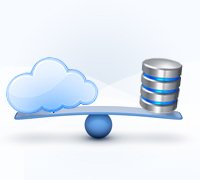When it comes to deploying IT infrastructure, selecting the right model is crucial. Fundamental to this decision, IT departments must make sense of the options available to them and understand their strengths and weaknesses. But this isn’t as simple as deciding which model is better. It’s about understanding which model is right for the business — right now and into the future. With such a variety of models (as well as vendors) to choose from though, this can be a challenge for companies of all sizes to figure out.
An explosion of choice
There are roughly five different infrastructure consumption models that organisations can choose from. These range from ‘off the peg’ options such as as-a-service and hyper converged, to the middle ground of converged infrastructure, to the more complex and tailored best-of-breed solutions and commodity hardware running management software. You’d think it relatively easy for a company to choose the one that suits them best – there are only five after all – but, when combined with trends around public, private and hybrid clouds, it can get rather difficult. All models offer a balance of benefits and challenges.
With this explosion of options, there simply isn’t time to compare each vendor in every consumption model. Vendor hype doesn’t help either. Add this to the fact that the industry is constantly evolving, with new choices emerging every week, and it becomes even more complicated. Beyond that, independent research is hard to come by and hands-on testing is typically required.
Narrowing the search
To help businesses avoid becoming overwhelmed with choice and to identify the best solution, it can help to have a methodology for narrowing down the available options. This ensures they’re able to objectively look at which infrastructure model best suits the needs of their business:
1. Rank the priorities of the business
An organisation needs to start off by essentially ranking five key considerations: data volume, ease of implementation, degree of vendor lock-in, implementation of flexibility and cost efficiency. To do this, they need to ask themselves: Which of these is the most imperative to making the business successful? By understanding the relative importance of such factors, it can quickly narrow the list of viable consumption models.
2. Understand the infrastructure models
Next a company needs to understand the pros and cons for each model. For example, if an organisation wants easy implementation and is happy to sacrifice a little on flexibility and vendor lock-in, then as-a-service would be the best choice. When firms such as Uber or AirBnB first launched, they may not have had the budget or expertise to build their own infrastructure, but could use as-a-service to quickly scale up – ‘on demand’ – to grow and meet their customer needs. As an aside, this fits their business model perfectly since Uber does not own any cars and AirBnB does not own any property. So why should these online business own any IT infrastructure?
Whereas, if scalability is more important for an organisation, less vendor lock-in is desired, and it doesn’t mind a more extensive implementation process, then an infrastructure model that runs management software on commodity hardware maybe of interest. For example, a global e-commerce company, such as eBay, has to consistently deliver its service to millions of customers worldwide. With so much data to manage, it needs an extensive and reliable infrastructure underpinning it but simultaneously, also one that is cost effective and tailored to its large-scale needs. As such, software on commodity hardware is probably the natural choice.
Between the extremes of these two models, the extent to which they serve a business’s priorities will change and therefore an organisation will need to carefully identify which actually suits them best.
3. Start the elimination process
Once a business understands how each model works, and its pros and cons, it then needs to weigh them against its priorities. First, it needs to eliminate the two infrastructure models that least serve its top priority. For example, if a company’s most important consideration is ease of implementation, it would cross best-of-breed appliances and software on commodity hardware off its list because these have a more involved set up process representing a bigger investment.
Other considerations
Even if a single consumption model can accommodate all of an enterprise’s IT needs today, CIOs should expect a degree of change over time. As new consumption models evolve, businesses should look for opportunities to move to a new consumption model that better aligns to existing or changing priorities.
For complex IT environments or environments with widely varying priorities and needs (such as branch-office IT vs. core infrastructure), an organisation may require multiple consumption models. Of course, this will always add complexity over adopting a single model, but it may be the only way to meet some business needs, or may just be simply more cost effective.
Architecting the future
As we’ve seen over the last decade, the evolution of available infrastructure options has made the task of architecting the next generation data centre more challenging than ever. Indeed, the wide variety of infrastructure consumption models today is a tremendous opportunity for enterprises of all sizes. These options enable more rapid and more cost-efficient deployment and management of computing infrastructure at scales both large and small. That said, the additional complexity of selecting the right consumption model, vendors and products often clouds these decisions with uncertainty.
If one thing is clear, it’s that no one option fits every need. If CIOs balance the advantages and disadvantages of each infrastructure option, they’ll be able to identify the consumption model that suits them best. Don’t believe all the hype, but do realise there are many more options than a few years ago for you to choose from. Make sure you have a methodology in place to work out which are right for you, as you make the transition to a next-generation approach to IT.
Martin Cooper is a technical director for enterprise storage specialist SolidFire.


